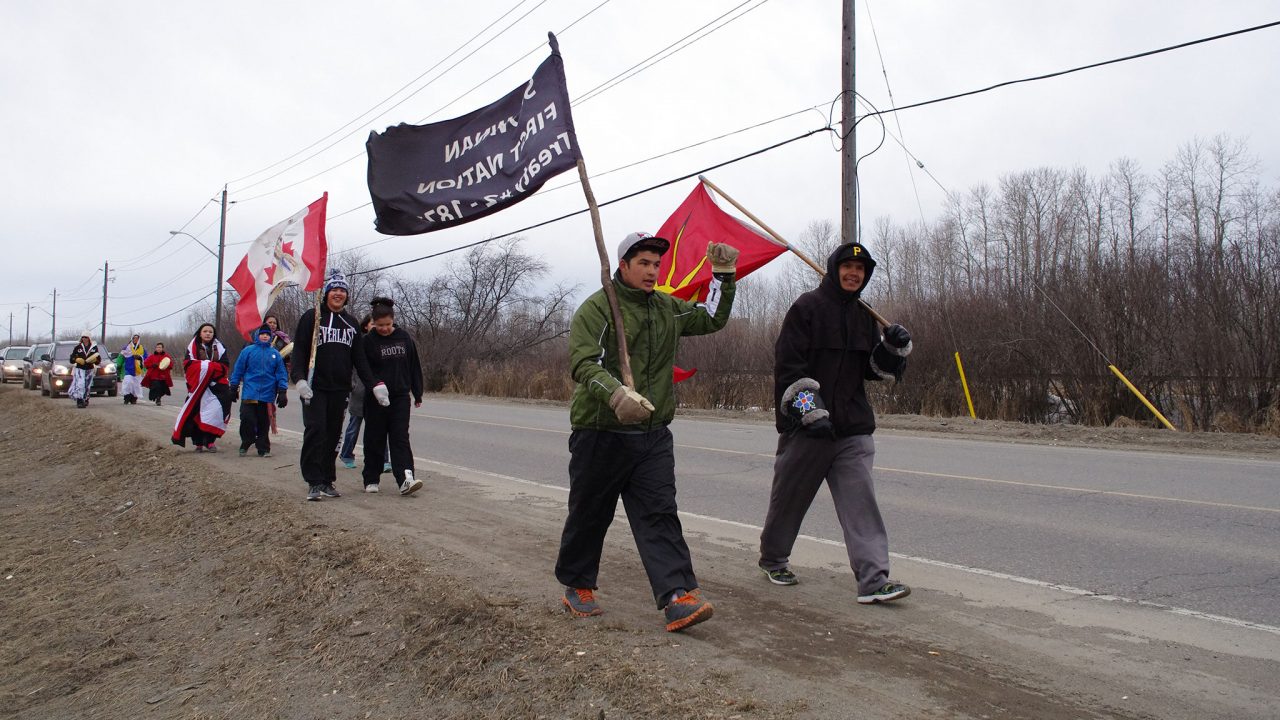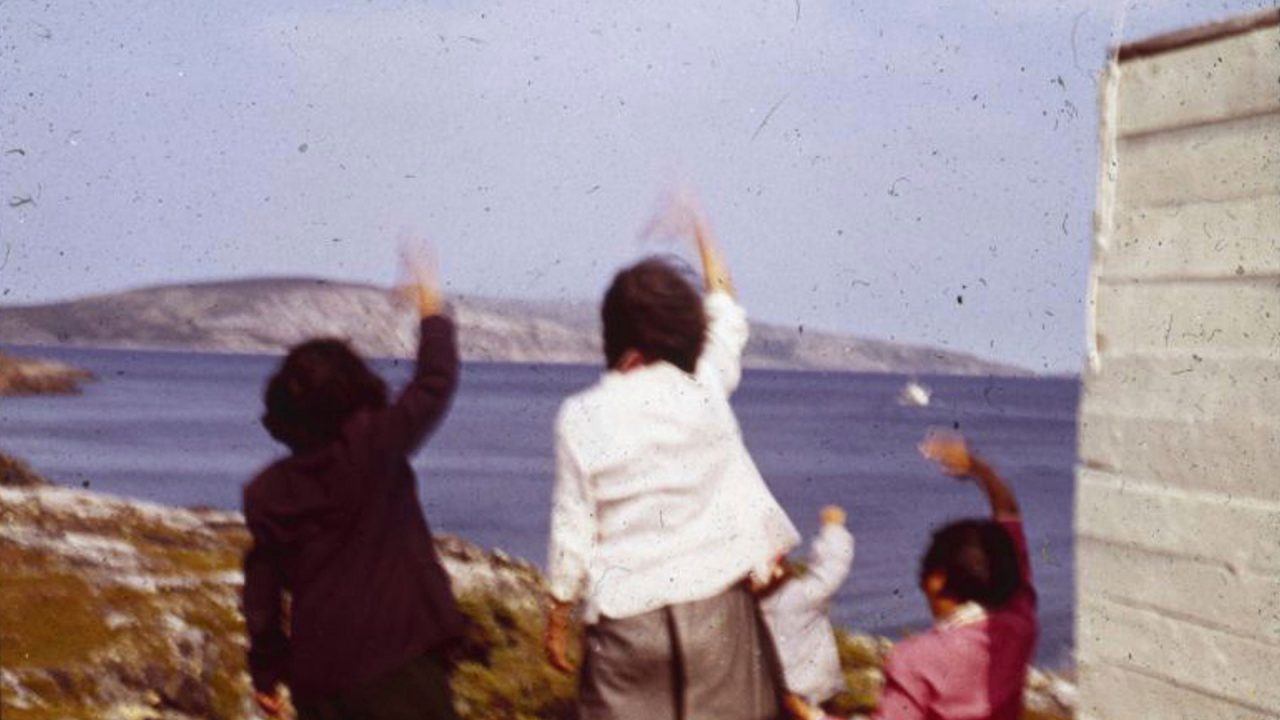
Mini-Lesson for Trick or Treaty?
Mini-Lesson for Trick or Treaty?
Mini-Lesson for Trick or Treaty?
School Subjects:
- Social Studies—Contemporary Issues
- Civics/Citizenship—Provincial and Federal Governments
- Indigenous Studies—History/Politics
Ages: 15-17
Trick or Treaty?, Alanis Obomsawin, provided by the National Film Board of Canada
Keywords/Topics: Treaties, First Nations, Human Rights, Indigenous Peoples, Relationships, Negotiations, Promises, Oral History, Constitutional Rights, Indian Act
Overarching Question: First Nations Peoples view treaties as sacred, binding pacts forged between independent nations in a spirit of reciprocity, mutual respect and honesty. To them, entering into an agreement of this kind makes you part of the same family. In your opinion, what concrete actions can non-Indigenous people take to honour the promises and commitments negotiated and enshrined in these treaties?
Educational Synopsis: The activities based on Alanis Obomsawin’s film Trick or Treaty? aim to have students better understand the spirit and intent of the treaties as part of a nation-to-nation relationship between Indigenous Peoples, the British Crown and the Canadian government. Students will discuss the context in which the Numbered Treaties were negotiated, interpreted and signed as they compare the various positions with respect to oral tradition and written history. The overall objective is to raise awareness (not just among students, but all Canadians as well) of the promises made and, equally, of the historical wrongs and fallacies stemming from government failure to respect the spirit of the agreements.
Activity 1: The Current Situation
Before viewing the clip, divide students into small groups. Have each group list the conditions to forging a relationship that will leave both parties satisfied (five minutes). The class then comes together in a circle to share their ideas.
Following this, have students research the Numbered Treaties. They must:
- find a geographic map showing the territory covered by each treaty;
- highlight some of the rights negotiated in the treaties;
- locate the territory covered by Treaty 9;
- locate the community of Attawapiskat.
Clip to watch (0:24–2:07): Press conference with Shawn Atleo, who was Chief of the Assembly of First Nations in 2012
Based on the questions below, have students write down their thoughts and theories in a reflection paper:
- What is the definition of the word “treaty”?[1]
- How has Canada benefited from the treaties?
- According to Shawn Atleo, what are the consequences of the Canadian government’s failure to respect its commitments to its partners, the Indigenous Peoples?
- Why didn’t Indigenous people benefit equally from the treaties?
- What solutions would you suggest to correct these injustices?
Summary
Through this activity, students will learn about colonization and the Numbered Treaties, as well as how the impact of the treaties differed for the signing parties. It is important for students to understand that, for Indigenous people…
- Treaties are sworn engagements witnessed by the Creator;
- Indigenous nations never ceded the land, their interpretation of the agreement being that these lands and their resources would be shared equitably, in a spirit of sustainability and respect for nature;
- The agreements were signed with the understanding that they would be reciprocal and benefit both parties equally.
By thinking about the conditions under which these historic agreements were negotiated—including that of reciprocity, the key to a healthy and equitable relationship—students will better understand how, without the treaties, their ancestors would not have been entitled to settle on those lands or benefit from their resources. Students should also understand that, by failing to honour the promises made during the treaty negotiations, Canada and its provinces have broken their contract with Indigenous people and accumulated a historic debt. Students should further consider the extent to which these historic agreements have affected modern society: While they enabled Canada’s economic development on the one hand, this development was generally to the detriment of Indigenous customs and communities.
Activity 2: It’s All in the Wording…
Before watching the clip, students form a sharing circle and briefly discuss the following questions:
- What are the repercussions of broken promises?
- Is an oral promise as binding as a written promise? Briefly explain.
Clip to watch (36:49–48:38)
Part A: After watching the clip, students discuss the following question in a sharing circle:
- Why do the Cree and Anishinaabe in Ontario feel Treaty 9 is a trick?
Part B:
- Divide the class into small groups.
- Each group will create a short theatre scene (less than five minutes) showing what Canada might have been like, had the oral version of Treaty 9 been respected.
Summary
This activity explores the importance of oral history to Indigenous people. Words and speech are essential, intrinsic components of Indigenous morality, ethics, spirituality, traditions and cultures. For Cree and Anishinaabe people in Ontario, Treaty 9 is a solemn commitment based on oral promises, a cornerstone of Indigenous beliefs and practices. However, by favouring a written version that contained very little of what had actually been negotiated, the Canadian government representatives betrayed their Indigenous partners.
Activity 3: Marching Together into the Future?
Clip to watch (56:06–1:04:15)
Students discuss the following question in a sharing circle:
- Why do you think Obomsawin kept the Nishiyuu walkers for the end of her film?
The clip shows hundreds of young Indigenous people on a long trek to educate Canadians on the importance of honouring the promises made in the treaties. Their journey helped rekindle cultural pride, along with the hope that the government would honour the intent and spirit of the treaties, and thus create a brighter future for Indigenous youth.
In a sharing circle, students draft a text outlining how they have personally benefited from the signing of treaties with Indigenous peoples.
Following this, each student will write a reflection paper in response to these questions:
- Have Indigenous youth historically benefited from the treaties? Explain your answer.
- What could politicians do to ensure that Indigenous youth benefit from the promises made in the treaties?
Summary
The aim of this activity is to highlight how non-Indigenous people have benefited from the treaties. The ancestors of non-Indigenous children were granted certain privileges, such as access to the many natural resources that are a source of wealth for Canada’s provinces. Students should understand that, without the royalties and taxes accrued from these resources, most of what we today consider our rights and privileges—like health care and education—would not exist. They should also understand that, though the treaties are ostensibly there to guarantee fairness and reciprocity, Indigenous youth did not always enjoy the same rights and privileges. Lastly, they should understand that these agreements are still in effect, and that each of us has a role to play in ensuring that the oral and written promises are kept in the future, in the interests of justice and fair play.
Take Action: Treaties – A Collective Engagement
As a group, students will first research the treaties signed in the territory where they are situated. After this, they will create a project to educate the school community about the agreements that apply to their jurisdiction. The final aim of the project is to encourage the school community to take concrete action to ensure that the terms of these treaties (which are still in effect) are upheld.
The general aim of education is to put acquired knowledge and skills toward building a better world. By creating a community project, students become agents of change. Educating their community about the treaties will make them realize that the onus for honouring these contracts falls upon them, too. Indeed, the treaties remain legally binding agreements that continue to affect the present day. In this light, we must collectively ensure that the promises they contain are not broken. Students can play a big part in raising awareness so that, as a society, we can respect the spirit and intent of the treaties. By honouring these treaties and their engagements, non-Indigenous people can greatly contribute to reconciliation.
A francophone Métis from Manitoba, Joël Tétrault currently teaches Indigenous perspectives in the Louis Riel School Division in Winnipeg. A passionate educator, he has worked in education for 18 years, teaching mainly Canadian history, Indigenous perspectives, law and francophone cinema. For Joël, teaching means empowering students and encouraging them to take action to build a society that’s more just and equitable for all.
Pour lire cet article en français, cliquez ici.
Discover more Mini-Lessons | Watch educational films on NFB Education | Watch educational playlists on NFB Education | Follow NFB Education on Facebook | Follow NFB Education on Pinterest | Subscribe to the NFB Education Newsletter



